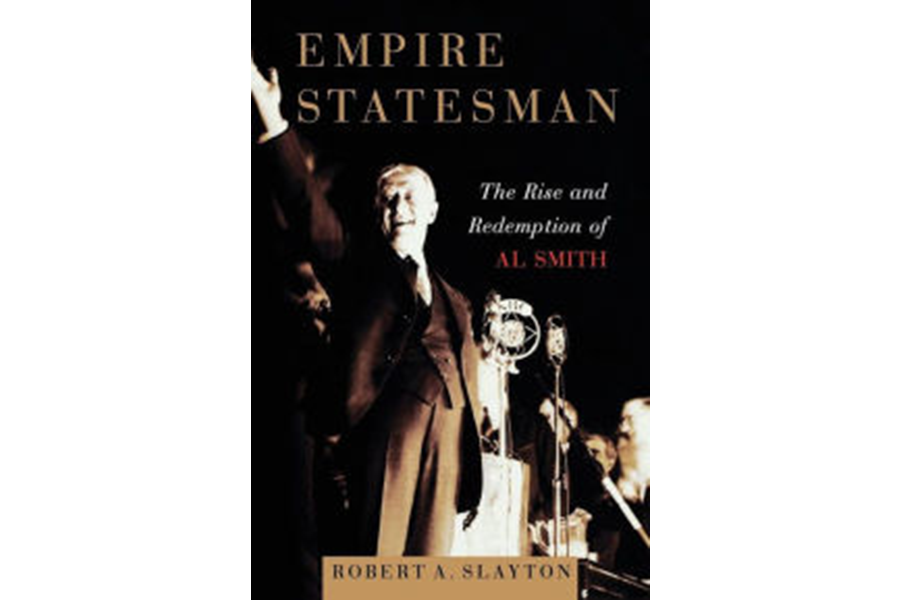Was Al Smith,1920s NY icon and presidential hopeful, an early Donald Trump?
Loading...
History buffs have preoccupied themselves for months trying to find a historical precedent for Donald Trump. Is he a new George Wallace? The next Ross Perot, Richard Nixon, or Ronald Reagan?
Or maybe he shares the “New York values” of other Big Apple-born candidates for president. Other than Trump and Teddy Roosevelt, perhaps no major contender in history has been as closely tied to the city as Al Smith, the governor whose failed bid for the presidency in 1928 is largely lost to obscurity.
So is Trump another Smith? Absolutely not, says Robert Slayton, a history professor at California’s Chapman University who wrote 2001’s Empire Statesman: The Rise and Redemption of Al Smith.
In fact, Slayton believes that the subject of his biography boasted a decidedly un-Trumpian enthusiastic embrace of immigrants and religious diversity. “He represented things that Donald Trump does not: He did not put anyone down. If Smith is the real New Yorker, Trump is the anti-New Yorker. He’s everything Smith fought against it.”
In an interview, Slayton talks about Smith’s battle against bigotry, the tolerance he defended and his landslide defeat. “Everything about the new America was wrapped up in Al Smith,” Slayton says, “and he was very badly beaten.” But, he believes, Smith’s legacy is still inspirational today.
Q: You begin your biography with a remarkable story about a Smith rally in Oklahoma that drew 30,000 people and a nationwide audience on radio. What happened on his way to speak and how did inspire him to change the script?
Smith was told openly that a Roman Catholic cannot run for president, that he is loyal to a foreigner, the Pope.
He’d been attacked viciously during his national campaign, with a school board even sending home a note to every child saying that if Al Smith is president, you won’t be able to have a Protestant Bible. People were handing out pictures of the Lincoln Tunnel, which was being built between New York and New Jersey, and saying it’s the secret tunnel they’ll use to bring the Pope from Rome to Washington D.C.
At one point, he’s on a train going into Oklahoma and sees a cross burning by the side of the track. He jokes about it, turning to one of his Jewish advisers and saying “Joe, how’d they know you were on the train?” But he’s really hurt.
So he drops the speech he’d planned and gives this incredible speech defending America: Oppose me if you don’t agree with my positions, but don’t dismiss me because of my religion. That’s not the American way, you cannot penalize a person because of their faith.
That’s the exact opposite of what Trump epitomizes. Smith represents the real New York City, which is great and tolerant and diverse.
Q: Had there been a candidate before Smith who was so identified with the working class and immigrants?
Definitely no. He really is the pathbreaker, a self-made man, an orphan from a poor family.
When he was in the New York legislature, he was debating some bill with an upstate Republican who was an old-school patrician. Then another upper-class Republican interrupts and says “Boys, I’ve got big news, Cornell just won the big boat race!” Another patrician says: I’m a University of Michigan man.” Someone asks Smith if this bothers him, and he says, “I’m a Fulton Fish Market man. Now can we get on with it?” He had actually worked there.
Q: How did the country react to his embrace of immigrants?
In 1920, the US Census said that for the first time, the majority of Americans were living in cities – any place with 2,500 or more people.
I’ve lived in apartment buildings with 2,500 or more people. We’re not talking about cities like New York or Los Angeles. Even so, the country went hysterical over the idea that the old small towns were being replaced by the foreigners in the city.
And here was Smith representing foreigners, the real New York that says we want immigrants, we welcome them, they’re part of the American fabric.
Q: What prevented him from winning? Was it the anti-Catholic feeling in the country?
The 1920s were a very nativist decade. We think about it being the Roaring ‘20s. But the Ku Klux Klan was at its largest level in the 1920s, and it’s national, unlike in the period after the Civil War and in the 1950s and 1960s. The state with the largest membership is Indiana.
Smith was Catholic, and in favor of legalizing alcohol. A little cartoon was circulated on sticky paper so it could go up on walls all around the country. It shows a cabinet meeting after Al is elected president. At the head of the table is the Pope and around it are monsignors. Al Smith, the president, is in a bellboy’s outfit, and he’s carrying a jug of whiskey. That’s the kind of hysteria that existed.
Q: What is Smith’s legacy?
He was one of the great governors of New York. He created the modern administrative apparatus, created the modern budget system, and was a great reformer.
He is the person largely responsible for fire safety after the Shirtwaist fire and responsible for the notion that newcomers are part of America, that immigrants are as American as the descendants of people who came over on the Mayflower.
That is truly his great legacy. His defense of working-class immigrants resonates with Americans today who are grappling with a new group of immigrants.
Randy Dotinga, a Monitor contributor, is president of the American Society of Journalists and Authors.







